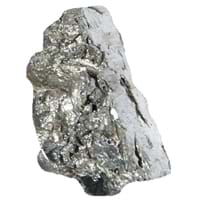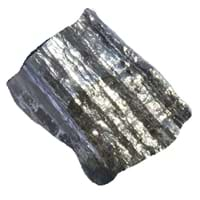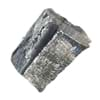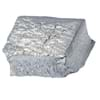Ytterbium vs Molybdenum
Periodic Table
Symbol
Yb
Mo
Group Number
Not Available
6
12
Period Number
6
5
Block
f block
d block
Element Family
Lanthanide
Transition Metal
CAS Number
7440644
26
7439987
99+
Space Group Name
Fm_ 3m
Im_ 3m
Space Group Number
225.00
2
229.00
1
Facts
Interesting Facts
- Ytterbium metal oxidizes rapidly if exposed to air.
- Ytterbium metal can dissolve quickly in Mineral acid.
- Molybdenum is highly reactive metal, hence not found free in nature .
- Till 18th century Molybdenum element were often mistaken as a carbon or Lead.
Sources
Found in Minerals, Mining, Ores of Minerals
Found in Minerals, Mining, Ores of Minerals
History
Who Discovered
Jean Charles Galissard de Marignac
Carl Wilhelm Scheele
Discovery
In 1878
In 1778
Abundance
Abundance In Universe
2 * 10-7 %
22
5 * 10-7 %
19
Abundance In Sun
~0.0000001 %
26
~0.0000009 %
19
Abundance In Meteorites
0.00 %
36
0.00 %
24
Abundance In Earth's Crust
0.00 %
33
0.00 %
39
Abundance In Oceans
0.00 %
37
0.00 %
9
Abundance In Humans
Not Available
0.00 %
14
Uses
Uses & Benefits
- Ytterbium metal is used in memory devices and tuneable laser.
- It is also used as industrial catalyst as the other catalysts are too toxic and polluting.
- Its alloys are used to make engine parts, drills, saw blade, etc.
- Lubricant additive made up of Molybdenum disulfide is commonly used in the industry. It is also used as a catalyst.
Industrial Uses
Automobile Industry, Chemical Industry
Aerospace Industry, Electrical Industry, Electronic Industry
Medical Uses
NA
NA
Other Uses
Alloys
Alloys
Biological Properties
Toxicity
Highly Toxic
Toxic
Present in Human Body
No
Yes
In Blood
Not Available
0.00 Blood/mg dm-3
31
In Bone
Not Available
0.70 p.p.m.
18
Physical Properties
Melting Point
824.00 °C
99+
2,617.00 °C
5
Boiling Point
1,196.00 °C
99+
4,612.00 °C
9
Appearance
Physical State
Solid
Solid
Color
Silvery White
Gray
Luster
Metallic
Metallic
Hardness
Mohs Hardness
Not Available
5.50
7
Brinell Hardness
343.00 MPa
31
1,370.00 MPa
7
Vickers Hardness
206.00 MPa
33
1,400.00 MPa
6
Speed of Sound
1,590.00 m/s
99+
5,400.00 m/s
6
Optical Properties
Reflectivity
Not Available
58.00 %
15
Allotropes
No
No
α Allotropes
Not Available
Not Available
β Allotropes
Not Available
Not Available
γ Allotropes
Not Available
Not Available
Chemical Properties
Chemical Formula
Yb
Mo
Isotopes
Known Isotopes
30
9
25
14
Electronegativity
Pauling Electronegativity
Not Available
2.16
5
Sanderson Electronegativity
Not Available
1.15
19
Allred Rochow Electronegativity
1.06
33
1.30
24
Allen Electronegativity
Not Available
2.16
3
Electropositivity
Pauling Electropositivity
Not Available
1.84
99+
Ionization Energies
1st Energy Level
603.40 kJ/mol
99+
684.30 kJ/mol
37
2nd Energy Level
1,174.80 kJ/mol
99+
1,560.00 kJ/mol
37
3rd Energy Level
2,417.00 kJ/mol
99+
2,618.00 kJ/mol
99+
4th Energy Level
4,203.00 kJ/mol
31
4,480.00 kJ/mol
26
5th Energy Level
Not Available
5,257.00 kJ/mol
32
6th Energy Level
Not Available
6,640.80 kJ/mol
22
7th Energy level
Not Available
12,125.00 kJ/mol
13
8th Energy Level
Not Available
13,860.00 kJ/mol
16
9th Energy Level
Not Available
15,835.00 kJ/mol
16
10th Energy Level
Not Available
17,980.00 kJ/mol
18
11th Energy Level
Not Available
20,190.00 kJ/mol
17
12th Energy Level
Not Available
22,219.00 kJ/mol
15
13th Energy Level
Not Available
26,930.00 kJ/mol
13
14th Energy Level
Not Available
29,196.00 kJ/mol
13
15th Energy Level
Not Available
52,490.00 kJ/mol
7
16th Energy Level
Not Available
55,000.00 kJ/mol
8
17th Energy Level
Not Available
61,400.00 kJ/mol
9
18th Energy Level
Not Available
67,700.00 kJ/mol
9
19th Energy Level
Not Available
74,000.00 kJ/mol
9
20th Energy Level
Not Available
80,400.00 kJ/mol
10
21st Energy Level
Not Available
87,000.00 kJ/mol
9
22nd Energy Level
Not Available
93,400.00 kJ/mol
7
23rd Energy Level
Not Available
98,420.00 kJ/mol
6
24th Energy Level
Not Available
104,400.00 kJ/mol
2
25th Energy Level
Not Available
121,900.00 kJ/mol
1
26th Energy Level
Not Available
127,700.00 kJ/mol
1
27th Energy Level
Not Available
133,800.00 kJ/mol
1
28th Energy Level
Not Available
139,800.00 kJ/mol
1
29th Energy Level
Not Available
148,100.00 kJ/mol
1
30th Energy Level
Not Available
154,500.00 kJ/mol
1
Electrochemical Equivalent
2.15 g/amp-hr
25
0.89 g/amp-hr
99+
Electron Work Function
Not Available
4.60 eV
12
Other Chemical Properties
Ionization, Radioactive Isotopes, Solubility
Anti Corrosion, Ionization, Radioactive Isotopes, Solubility
Atomic Properties
Atomic Number
70
99+
42
99+
Electron Configuration
[Xe] 4f14 6s2
[Kr] 4d5 5s1
Crystal Structure
Face Centered Cubic (FCC)
Body Centered Cubic (BCC)
Crystal Lattice
FCC-Crystal-Structure-of-Ytterbium.jpg#100
BCC-Crystal-Structure-.jpg#100
Atom
Number of Protons
70
99+
42
99+
Number of Neutrons
103
31
54
99+
Number of Electrons
70
99+
42
99+
Radius of an Atom
Atomic Radius
176.00 pm
18
139.00 pm
39
Covalent Radius
187.00 pm
20
154.00 pm
32
Van der Waals Radius
242.00 pm
12
200.00 pm
28
Atomic Weight
173.05 amu
99+
95.95 amu
99+
Atomic Volume
24.79 cm3/mol
9
9.40 cm3/mol
99+
Adjacent Atomic Numbers
Valence Electron Potential
50.30 (-eV)
27
88.60 (-eV)
13
Lattice Constant
548.47 pm
11
314.70 pm
99+
Lattice Angles
π/2, π/2, π/2
π/2, π/2, π/2
Lattice C/A Ratio
Not Available
Not Available
Mechanical Properties
Density
Density At Room Temperature
6.90 g/cm3
99+
10.28 g/cm3
36
Density When Liquid (at m.p.)
6.21 g/cm3
99+
9.33 g/cm3
20
Tensile Strength
58.00 MPa
18
324.00 MPa
13
Viscosity
Not Available
Not Available
Vapor Pressure
Vapor Pressure at 2000 K
Not Available
0.00 (Pa)
26
Elasticity properties
Shear Modulus
9.90 GPa
99+
126.00 GPa
8
Bulk Modulus
30.50 GPa
39
230.00 GPa
6
Young's Modulus
23.90 GPa
99+
329.00 GPa
6
Poisson Ratio
0.21
33
0.31
13
Other Mechanical Properties
Ductile, Malleable
Ductile, Weldable
Magnetic Properties
Magnetic Characteristics
Specific Gravity
6.97
99+
10.22
27
Magnetic Ordering
Paramagnetic
Paramagnetic
Electrical Properties
Electrical Property
Conductor
Semiconductor
Resistivity
0.25 nΩ·m
99+
53.40 nΩ·m
99+
Electrical Conductivity
0.04 106/cm Ω
38
0.19 106/cm Ω
11
Electron Affinity
50.00 kJ/mol
21
71.90 kJ/mol
14
Thermal Properties
Specific Heat
0.15 J/(kg K)
36
0.25 J/(kg K)
21
Molar Heat Capacity
26.74 J/mol·K
25
24.06 J/mol·K
99+
Thermal Conductivity
38.50 W/m·K
35
138.00 W/m·K
12
Critical Temperature
26.30 K
7
Not Available
Thermal Expansion
26.30 µm/(m·K)
14
4.80 µm/(m·K)
99+
Enthalpy
Enthalpy of Vaporization
128.90 kJ/mol
99+
594.10 kJ/mol
8
Enthalpy of Fusion
7.66 kJ/mol
99+
27.61 kJ/mol
5
Enthalpy of Atomization
180.00 kJ/mol
99+
653.00 kJ/mol
7
Standard Molar Entropy
59.90 J/mol.K
21
28.70 J/mol.K
99+
|
||
|
||
|












